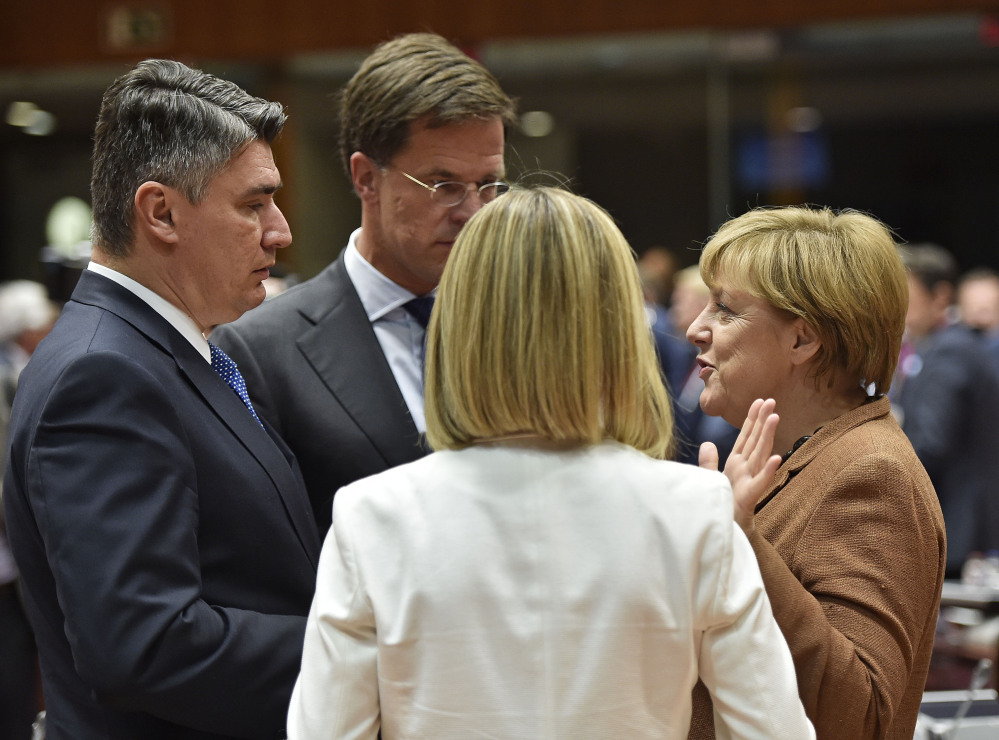BRUSSELS — European Union leaders, faced with a staggering migration crisis and deep divisions over how to tackle it, managed to agree early Thursday to boost border controls to ease the influx and to send 1 billion euros ($1.1 billion) to international agencies helping refugees at camps near their home countries.
The leaders also said that task forces of European experts sent to help register and screen migrants in so-called hotspots must be fully operational in Greece and Italy, and perhaps also Bulgaria, by November.
The move is intended to quickly identify migrants eligible for refugee status and relocation into other European countries, and to filter out economic migrants who are unlikely to qualify for asylum in Europe.
“The measures we have agreed today will not end the crisis. But they are all necessary steps in the right direction,” EU Council President Donald Tusk said.
He added that European leaders, who have disagreed acrimoniously with one another over how best to tackle the flow of people into the continent, finally appeared to reach agreement.
“It is clear that the greatest tide of refugees and migrants is yet to come,” he said. “Therefore we need to correct the policy of open doors and windows.”
The leaders also pledged to boost support to Lebanon, Turkey and Jordan to help them cope with the millions fleeing the fighting in Syria.
Tusk urged divided EU nations to hammer out a concrete plan “in place of the arguments and the chaos we have witnessed in the last weeks.”
French President Francois Hollande was more blunt. “Those who don’t share our values, those who don’t even want to respect those principles, need to start asking themselves questions about their place in the European Union,” he said.
His remarks came after the Czech Republic, Slovakia, Hungary and Romania voted against a plan adopted Tuesday to relocate 120,000 asylum-seekers to other member states over the next two years to ease the strain on Italy and Greece.
Copy the Story LinkSend questions/comments to the editors.




Success. Please wait for the page to reload. If the page does not reload within 5 seconds, please refresh the page.
Enter your email and password to access comments.
Hi, to comment on stories you must . This profile is in addition to your subscription and website login.
Already have a commenting profile? .
Invalid username/password.
Please check your email to confirm and complete your registration.
Only subscribers are eligible to post comments. Please subscribe or login first for digital access. Here’s why.
Use the form below to reset your password. When you've submitted your account email, we will send an email with a reset code.